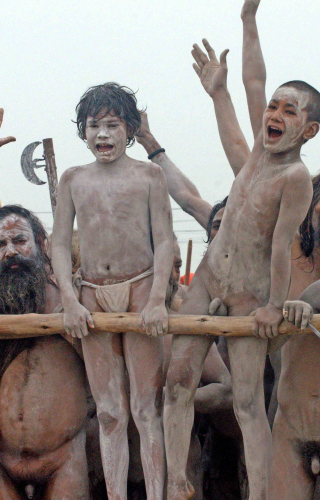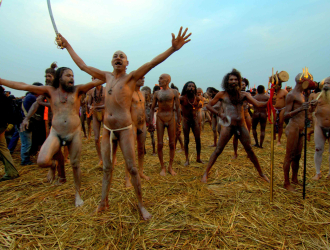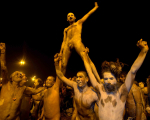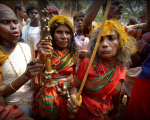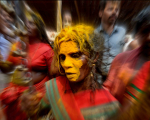'An outlandish celebration of the victory of good over evil, unbridled expressions of angry delirium, the transformation of a common man to the saintly, and a stubborn faith in the Mother Goddess', these are the words I had scribbled down in my diary after experiencing Kulasai, the Dussehra festival celebrated at Kulasekarapattinam, a small coastal village near Tiruchendur in Tamilnadu.
As a photographer, my journey took me from being curious and judgmental, to being sensitive and appreciative. For instance, the first time I shot at Koovagam (2012), my knowledge of gender dysphoria was minimal. Initially my goal was to observe, listen, and narrate experiences objectively. However, when I visited Koovagam the following year, I made friends, got comfortable with their world view, and celebrated their rituals with them. Since then, I have been advocating on gender inclusivity and rights of transgenders.
My interest in LGBTQI (Lesbian-Gay-Bisexual-Transgender-Queer-Intersex) rights led me to document festivals like the Chamayavilakku, also known as Kottankulangara Festival in Kollam, Kerala, and the Ganga Jatra festival held in Tirupati, Andhra Pradesh. In these two annual festivals, the cross-dressing communities congregate to express their choices. Living a life of dual identities, the cross-dressing men are a huge inspiration for those who are scared of breaking social norms.
I witnessed hundreds of men and women gather at the Kodungallur Bharani clad in red garments, with sabres in their hands, singing songs laden with sexual innuendo and circumambulating the temple with deliberately mutilated, bloody foreheads. Such fanatic expression of ritualistic vigour seems to be cathartic for the marginalised farm labour communities who participate in the festival every year.
Speaking of catharsis, I remember my experience at the Hazratbal shrine in Srinagar, where the mass wailing of hundreds of Muslim women, as they wait to see the holy relic of Prophet Muhammad, seemed to me like a poignant cry for liberation from endless conflict in the Kashmir Valley. Over the years, I saw diverse narratives of festivals emerge. For some, a festival is an occasion for fanatic devotion, and for others, a quest for liberation from ennui. For some, a festival is an occasion for cathartic expression of repressed emotions or identities, while for some, a moment to offer prayers for guidance to overcome difficult life experiences.
The pride walks in different cities too, are celebrations of sorts, giving power to the marginalized LGBTQI community to walk out in open and reclaim public spaces, without having to hide their identity. For anyone trying to fathom gender dysphoria and India’s complex relationship with LGBTQI, these festivals are a great place to start.
I feel I could spend my entire life documenting festivals, and still find it impossible to faithfully articulate the diversity of India’s pluralistic cultures. From the transwomen embracing widowhood for a day at Koovagam to the high-spirited mourning procession during Muharram, the ‘chamayam’ cross-dressing men put on during Chamayavilakku, the mad frenzy of crowds at the Sangam during Kumbh Mela, the death-defying stunt of taming raging bulls at Jallikattu, or the heart-wrenching wails of women at Hazratbal; these festivals are multi-layered and complex in their histories and narratives. However, my pursuit would continue to not only celebrate the myriad forms of India’s festivals from an anthropological perspective, but also to advocate for social change and to bring about gender awareness through my photographic work.
On a more hopeful note, I remember the words uttered by the women dancing spiritedly at the Kulasai festival, 'Thanks to these men from our village—by dressing up as Goddesses Durga (or Kali), with long hair and make-up, they are respecting us more.' Maybe men embracing the feminine identity, albeit for a day, has some power to change gender equations in their society.
